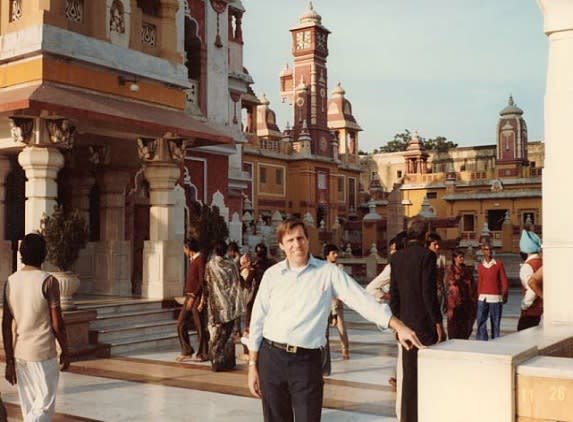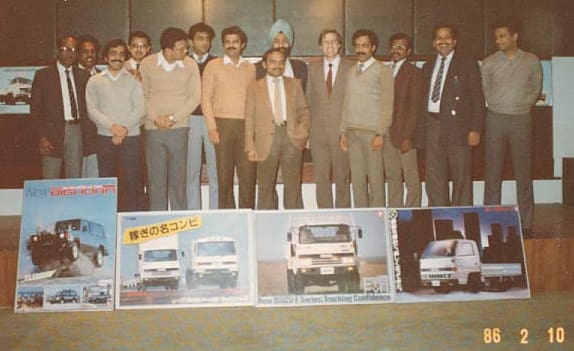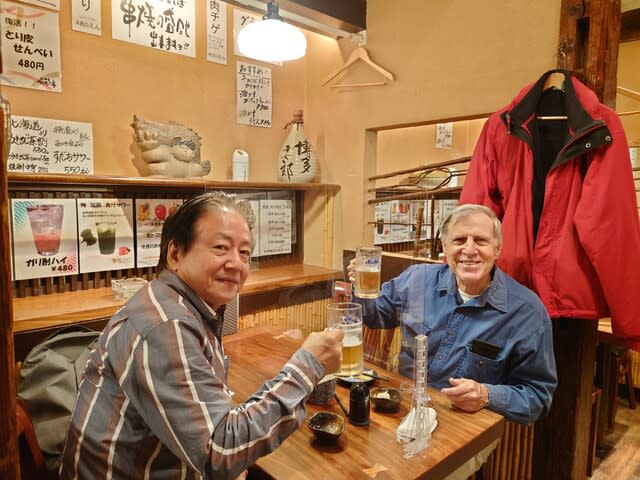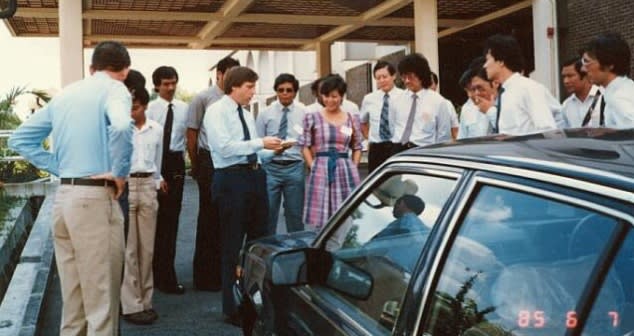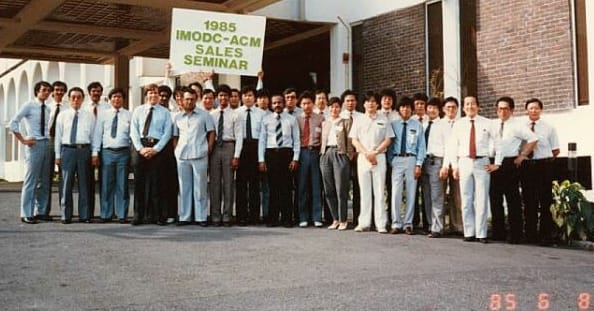さて、今回はトルコ訪問を掲載します。
私自身はトルコとは縁がありませんでしたが、トルコ料理が大好きで、
新宿三丁目のトルコ料理店「ボスボラス」でセミナーを開催したこともありました。
<Ron-sanのセミナー@ボスボラス>
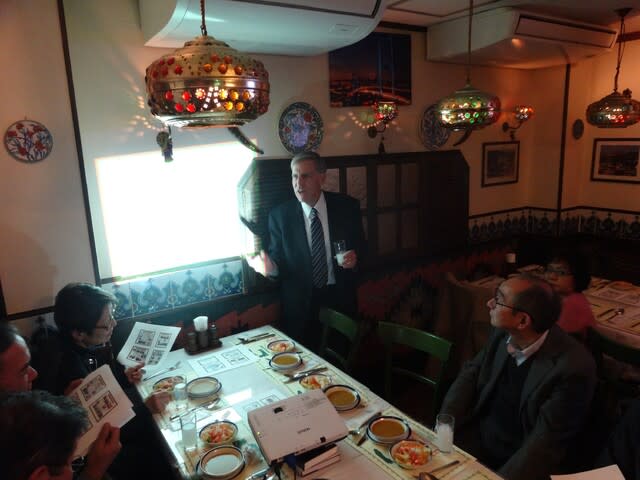
Ron-sanの豊富なビジネストリップにまつわる旅行談や日本も含めた異文化体験談のセミナーを随時実施しております。
コロナも落ち着いてきましたので、ご興味がありましたらお知らせいただければと思います。
さて、本題に戻ります。
Ronさんはトルコをかなり気に入ったようです。そのあたりの表現も参考になります。
Turkey
Toward the end of 1985, around November, I was asked to go to Turkey. Isuzu set up a new distributor and assembly operation there independent of General Motors and wanted to build its own international operation. My function here again was to develop their very fragmented sales operation. What I mean by fragmented, is that vehicles sales are sold to a sales dealer. Parts (for new vehicles) were sold to parts retail stores, and service was done by outside garages. That was known as the “THREE ‘S’s”. That is Sales, Service and Spare parts in one dealership. On that first trip, I only went around the country and interviewed the current dealers. I was to return to give the seminar on the next trip.
Turkey is a wonderful and historic country. That first trip was a real eye opener for me, and I fell in love with the country. I think they fell in love with me too, as I was asked back many times over my 20-year career in Isuzu Motors. I will talk about Turkey in detail later.
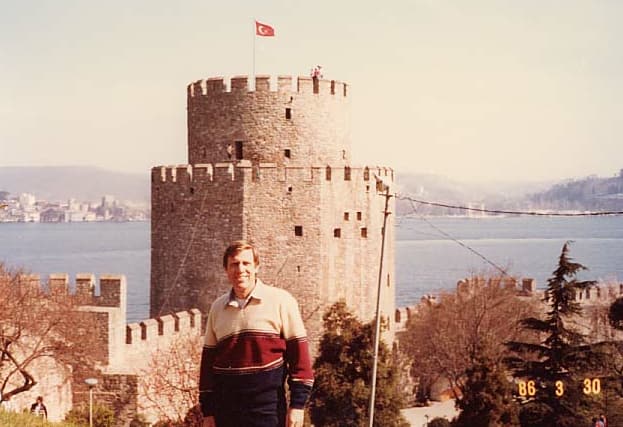
The Bosporus, March, 1986
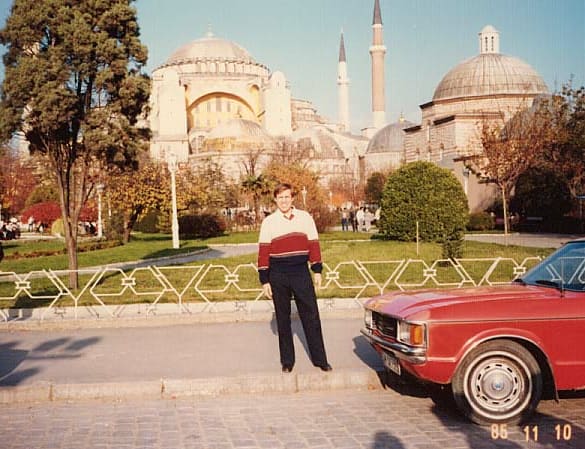
Mosques of Istanbul, November 1985
Turkey training
Two months after the Middle East trip, in June, 1986 I gave my first seminar in Turkey. I learned they had very old person-to-person sales techniques. There was very little product presentation or feature explanation. With my presentation and contests among the salesmen, I was able to create a complete new selling step for them which greatly made negotiating easier.
It was a booming success, and I received an open door to provide seminars there anytime I had material I thought would be helpful.
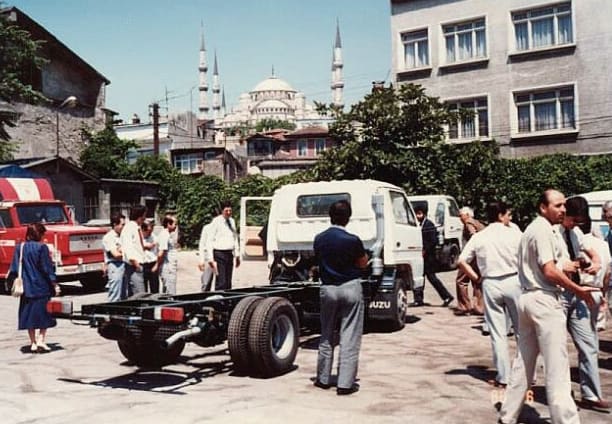
Turkey Sales Training, June 1987
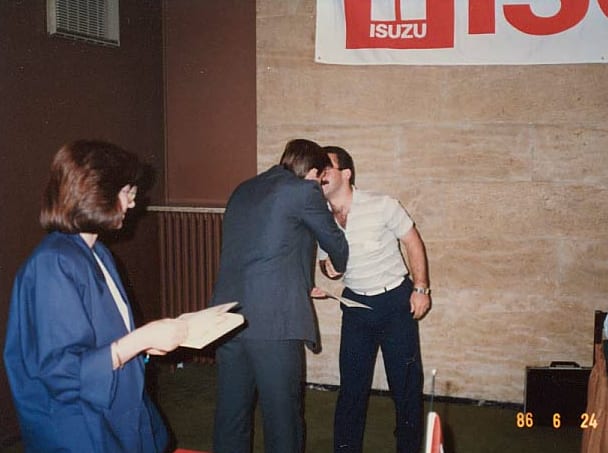
Yes, he is trying to kiss me. なかなか面白いシーンですね。
私自身はトルコとは縁がありませんでしたが、トルコ料理が大好きで、
新宿三丁目のトルコ料理店「ボスボラス」でセミナーを開催したこともありました。
<Ron-sanのセミナー@ボスボラス>

Ron-sanの豊富なビジネストリップにまつわる旅行談や日本も含めた異文化体験談のセミナーを随時実施しております。
コロナも落ち着いてきましたので、ご興味がありましたらお知らせいただければと思います。
さて、本題に戻ります。
Ronさんはトルコをかなり気に入ったようです。そのあたりの表現も参考になります。
Turkey
Toward the end of 1985, around November, I was asked to go to Turkey. Isuzu set up a new distributor and assembly operation there independent of General Motors and wanted to build its own international operation. My function here again was to develop their very fragmented sales operation. What I mean by fragmented, is that vehicles sales are sold to a sales dealer. Parts (for new vehicles) were sold to parts retail stores, and service was done by outside garages. That was known as the “THREE ‘S’s”. That is Sales, Service and Spare parts in one dealership. On that first trip, I only went around the country and interviewed the current dealers. I was to return to give the seminar on the next trip.
Turkey is a wonderful and historic country. That first trip was a real eye opener for me, and I fell in love with the country. I think they fell in love with me too, as I was asked back many times over my 20-year career in Isuzu Motors. I will talk about Turkey in detail later.

The Bosporus, March, 1986

Mosques of Istanbul, November 1985
Turkey training
Two months after the Middle East trip, in June, 1986 I gave my first seminar in Turkey. I learned they had very old person-to-person sales techniques. There was very little product presentation or feature explanation. With my presentation and contests among the salesmen, I was able to create a complete new selling step for them which greatly made negotiating easier.
It was a booming success, and I received an open door to provide seminars there anytime I had material I thought would be helpful.

Turkey Sales Training, June 1987

Yes, he is trying to kiss me. なかなか面白いシーンですね。












